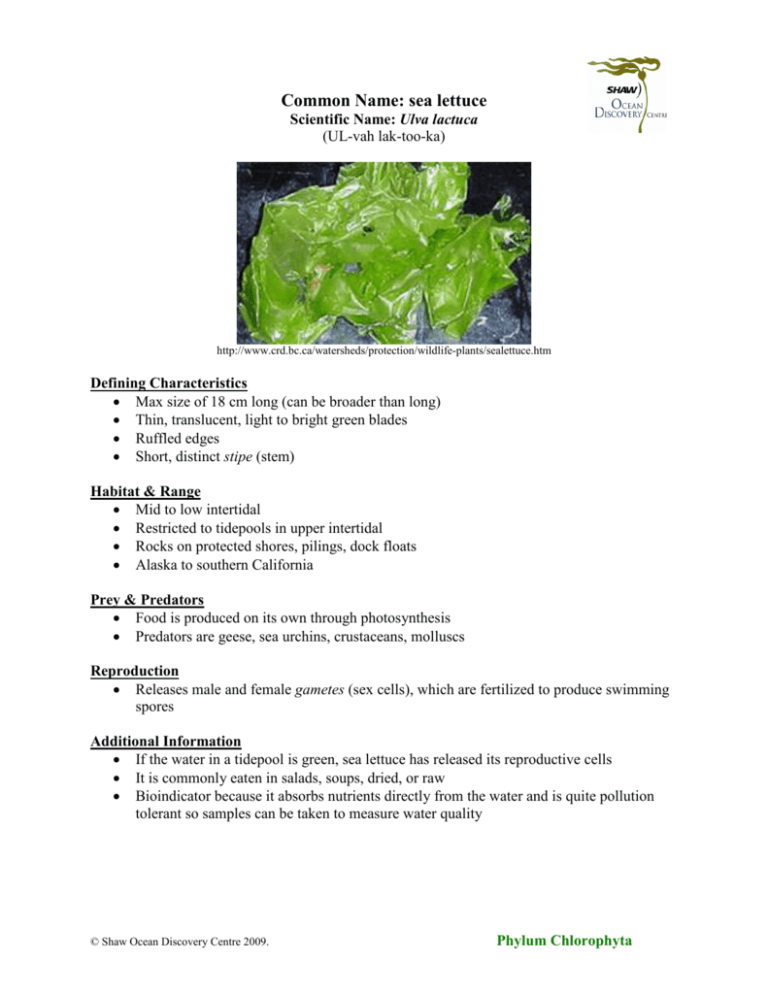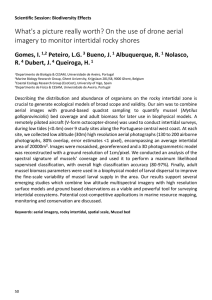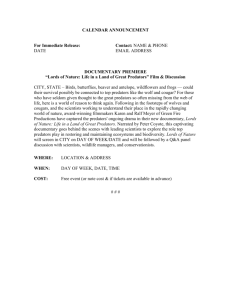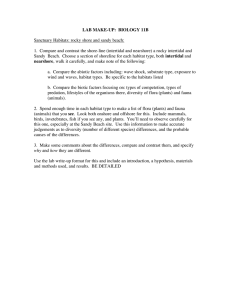Common Name: sea lettuce - Shaw Ocean Discovery Centre
advertisement

Common Name: sea lettuce Scientific Name: Ulva lactuca (UL-vah lak-too-ka) http://www.crd.bc.ca/watersheds/protection/wildlife-plants/sealettuce.htm Defining Characteristics • Max size of 18 cm long (can be broader than long) • Thin, translucent, light to bright green blades • Ruffled edges • Short, distinct stipe (stem) Habitat & Range • Mid to low intertidal • Restricted to tidepools in upper intertidal • Rocks on protected shores, pilings, dock floats • Alaska to southern California Prey & Predators • Food is produced on its own through photosynthesis • Predators are geese, sea urchins, crustaceans, molluscs Reproduction • Releases male and female gametes (sex cells), which are fertilized to produce swimming spores Additional Information • If the water in a tidepool is green, sea lettuce has released its reproductive cells • It is commonly eaten in salads, soups, dried, or raw • Bioindicator because it absorbs nutrients directly from the water and is quite pollution tolerant so samples can be taken to measure water quality © Shaw Ocean Discovery Centre 2009. Phylum Chlorophyta











